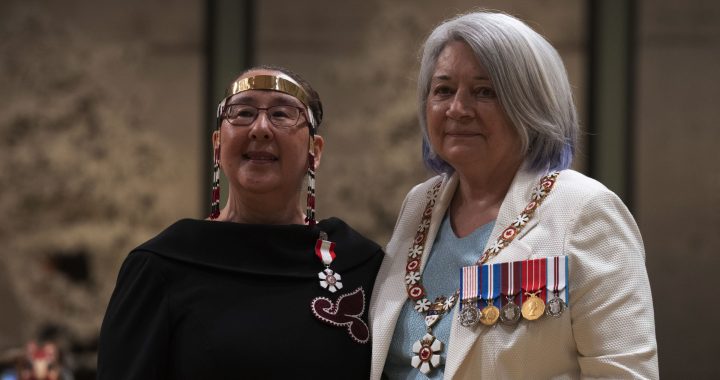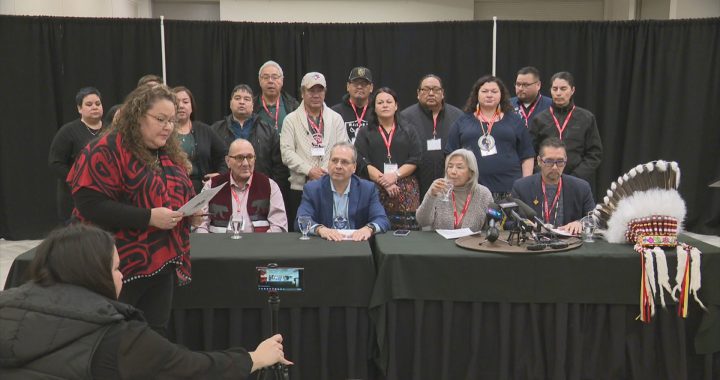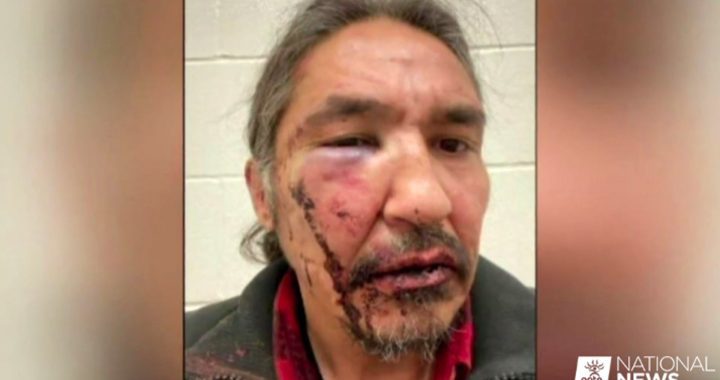A mother in the Yukon says she’s frustrated with the department of education’s redefinition of a nationally-recognized education plan program, and she’s concerned her son will never receive the proper supports he needs to succeed in school.
“Right now I’m sitting with a nine-year-old in Grade 4 who is reading, writing, and doing math at a Grade 2 level. And that seems to be okay,” she says.
“With the amount of accommodations and recommendations that he’s required to have to be successful, it really needs to be an IEP so that the system can be held accountable for his learning.”
In October 2019, the department of education changed the assessment criteria for what are called Individualized Education plans or IEPs. That change fully came into effect a year later in October 2020. IEPs are now only available to students who qualify as having severe special education needs, like needing help to eat, breathe and use the bathroom.
Students on IEPs before the change took place in 2019 were allowed to stay on them. However, 138 students previously on IEPs have since been transferred to Student Learning Plans (SLPs) in late 2020.
SLPs depend on the particular needs of the student, but generally include providing supports like permitting extra time for tasks, providing quiet workspaces and laptops for writing assignments and allowing less work expectations.
Genier’s son, Spencer, is a citizen of Na-Cho Nyak Dun First Nation. He attends fourth grade at an elementary school in Whitehorse.
Spencer would not be classified as what is commonly known as a special needs student even though he has significant learning difficulties and requires extra supports to help him learn, including speech therapy, physio and occupational therapy.
Genier suspects Spencer may be dyslexic though medical professionals have not formally diagnosed him with it. Spencer currently has no official diagnosis for his learning difficulties.
Since kindergarten, Genier has tried to have Spencer placed on an Individualized Education Plan (IEP). IEPs are recognized across Canada and are typically intended for students who require special education or who have learning difficulties like Spencer.
IEPs are legislated documents protected in the Yukon Education Act, and guarantee students placed on them receive the supports they require, like educational assistants, occupational therapy or supplementary aids and services.
The department of education is responsible for administering and implementing IEPs.
But Genier says her repeated requests for an IEP for her son have been denied by school educators with little explanation other than Spencer’s needs aren’t profound enough for an IEP.
“We really pushed and really advocated through the years, and every year it’s the same situation,” she says.
Genier says Spencer has had some supports in grade primary and Grade 2, but because he doesn’t have an IEP, those supports have never continued on to the next school year concurrently.
“Now we’re sitting in Grade 4, and so I brought it forward in September again and was told similarly ‘we have to give teachers a chance to assess the students and understand where they’re at.’ Then it’s Christmas, and then it’s New Years, and then it’s spring break.”
She says the lack of consistent supports for her son has severely affected his learning, and that Spencer now requires six to eight hours a week of extra tutoring outside of school for math, English and reading.
“He’s going to (have) a lack of skills to be a successful adult in the world,” says Amy Genier, who is a member of Ta’an Kwäch’än Council.
Program changes leaves mother ‘crushed’
But with a major overhaul of inclusive education, it’s now unlikely Spencer will ever be placed on an IEP.
Ryan Sikkes, assistant deputy minister of schools and student services, told APTN News this was done to ensure that “the plans are adequately reflecting the maximum potential for those students,” indicating that many students placed on IEPs did not have severe enough needs to fully require the program.
Sikkes reiterated that the department “wouldn’t move a student off an IEP onto another learning plan without full parental or guardian engagement and consent.”
SLPs are similar to IEPs, but they aren’t nationally recognized like an IEP. They also aren’t protected by the Education Act. This means the responsibility for keeping students on track no longer lies with the department of education, but with individual schools and teachers.
Genier says she was “crushed” when she heard the news, as Spencer’s needs no longer make him eligible for an IEP.
“It was really disheartening to hear they were cutting back on IEPs, especially since we’ve been fighting so hard to get my son on one,” she says.
“I don’t know if he’ll get a chance for an IEP this year, and honestly the chances are very slim.”
A spokesperson for the department of education said in an email statement “there have been no changes to the governing legislation – the Education Act – regarding a student’s eligibility for an IEP or the definition of an IEP.
“The type of learning plan a student has does not prevent the student from receiving the specific supports they need be successful. All learning plans are designed to provide the supports individual students need to be successful in school.”
Yukon First Nations Education Directorate calls for reversal
The change is not sitting well with Melanie Bennett, executive director of the Yukon First Nations Education Directorate (YFNED). She’s calling for a reversal of the criteria reassessments for IEPs.
YFNED data shows that in 2019, 337 First Nations students were on IEPs, compared to 172 for the 2020-2021 year.
YFNED along with other education advocates wrote a letter to Premier Sandy Silver in December expressing their concern.
Bennett says the department has a track record of failing First Nations students, as evidenced by the 2019 Auditor General’s report.
The report found the department failed to improve outcomes for First Nations students was unsuccessful in solving why First Nations students were more likely to drop out or fall behind compared to non-First Nations students.
The report also noted teachers were struggling to keep up with the reporting obligations required of IEPs.
“Those are legislated documents and it was clear in the Auditor General’s report that teachers were unable to meet those needs or the criteria of those legislated documents,” Bennett says.
“What will ensure our children, our Indigenous children, that without that legislation the needs of (SLPs) will be met? The pattern right now isn’t very positive. Our concern from the directorate is that we’re putting the students at risk when we’re making those decisions.”
The new assessment criteria will also affect graduation and post-secondary success for students who are on IEPs.
Prior to the change, students on IEPs were able to graduate with a standard high school diploma.
Now, students on IEPs will instead earn a school completion certificate, which doesn’t equate to graduation. The certificate is given to students that have significant learning challenges, usually those placed on IEPs, and it is based on a learning plan tailored to that student so that they can feel a sense of accomplishment and completion.
Bennett says completing school with the certificate will require additional assessments, upgrading and barriers down the road for those students in order to gain entry into post-secondary.
“Those are things that need to be deeply discussed and delved into before that change is enacted and that is something that didn’t happen,” she says.
Bennett says many parents of students who have been moved off IEPs are also confused about the change, and now want their child back on the program.
“A lot of our Indigenous parents were contacted by the schools and were unaware if, how and why this was going to be happening. It wasn’t rolled to effectively.”
She also questions why the change was made in the middle of an independent review of the department’s special education programs, which was born out of the failings of the 2019 Auditor General’s report. That review is set to be released this month.
“I think the timeline that came out on this has not been very well managed.”
Bennett says the fact that First Nations students are overrepresented on IEPs or similar plans reiterates a pattern of “low expectations.
“Our data has shown all along the pattern that our children are being identified as ‘less than,’ requiring (educational plans). We want to see teachers given tools to address this. Our data’s clearly telling us we can’t continue doing the same thing.”
Bennett says YFNED has still not been given a clear answer as to why the decision to alter IEP requirements made during the review. The organization is now hoping to meet with the department along with the Yukon Teacher’s Association, LDAY Centre for Learning and Autism Yukon to discuss IEPs.
Sickkes says the department is engaging with First Nations governments, YFNED and the Chief Committee on Education to hear their views and incorporate them into the review of special education.
“We’re committed to continuing that partnership as we make the next steps in the review which are looking at specific areas for improvement, and we’re excited to collaborate again with our Yukon First Nations partners to improve our system,” he says.
On March10, the Yukon Party, the official opposition, brought forward a motion in the legislative assembly asking the Liberal government to reconsider its plan to transfer students off of IEPs.
The Liberals relented agreed to support the Yukon Party’s motion. It passed motion passed unanimously 17-0.
Genier is hopeful it may lead to the new IEP criteria being reversed.
Meanwhile, Spencer has recently been placed on a Student Learning Plan, but she says it’s too soon to say how well it’s working.
(It’s) a great start but it does not grant the funds required to provide the extra support he has been clearly identified as needing,” she says.
“An IEP would allow my son to flourish. He needs this support to be successful in his life.”










